Charles and several others are planting vetiver to protect the mountain side surrounding the area where the new CTC (cholera treatment center) will be located. Several guys have been building rock walls in the really bad spots over the last few months.
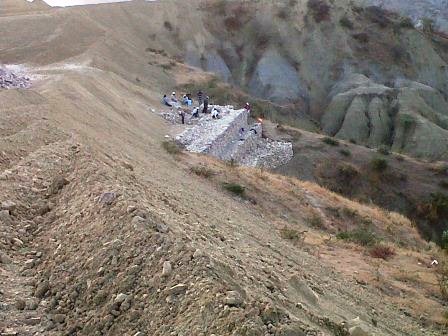
They have finished in one area, so Charles started planting and trying to stabilize the slope. They started by cutting rice sacks in half (length-wise) and sewing them. They filled these with dirt and then burned slots on the top.
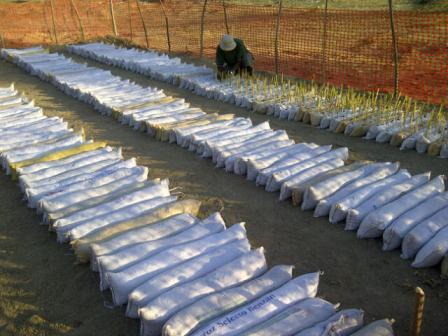
They inserted vetiver slips or starts and watered them daily until they began to take off.
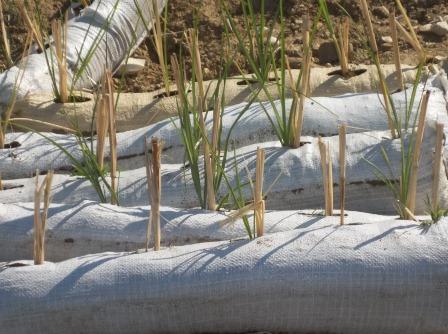
They loaded them up to transport them to the planting site.
Then unloaded them…
…and handed them down the mountain to those that were planting them.
These vetiver starts will grow quickly since our rainy season started early this year. The sacks were placed using the “A-frame” method. When you are standing on the side of a mountain, you can’t really tell what is the perfect horizontal line. This method gives that line so that the vetiver grass can be planted efficiently to minimize the damage done by heavy rainfall.
Vetiver grass for erosion control is an excellent technique for Haiti, especially in our mountainous area. We’ll post pictures in the coming months so that you can see the growth of the plants and the development of the area.


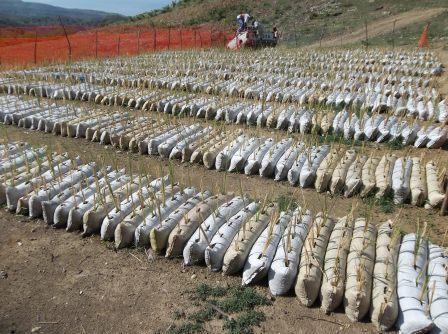
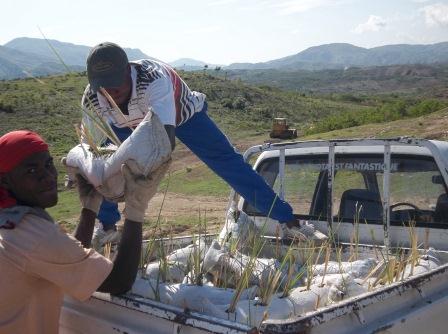
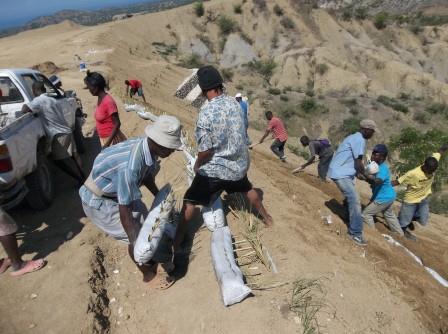
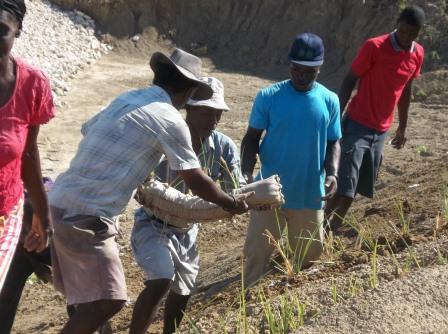
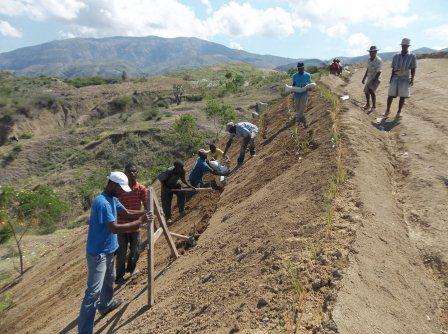
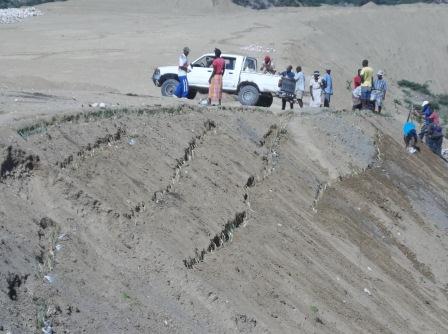
Comments(10)
Joanne Cottrill says
April 14, 2012 at 5:32 pmLots of hard work for the Community Developement Group but it will pay off. You are a great, hard-working bunch!
cathleen says
April 14, 2012 at 7:17 pmsuper cool to read about!
Heidi says
April 14, 2012 at 8:27 pmI am always impressed by – and grateful for – how hard you work. Thank you.
Cara says
April 14, 2012 at 11:31 pmAmazing job that will be appreciated for generations to come!
Dee Pring says
April 15, 2012 at 9:55 amWhat an amazing bunch of people in the Community Group!
john greenfield says
May 16, 2012 at 7:21 pmCongratulations Charles on a job well done. I have only one suggestion, those Gabions will tumble downm the hill in the next earth quake. I would plant a line of vetiver at the base of the bottom gabion hoping to help stabilise it and hold it in place.
Gabions must be well reinforced internally so that they don’t loose their shape in a quake. Each layer of stone as it is placed in the wire basket, should have wires streched from corner to corner, end to end and diagonally across the corners before laying the next stones on top and filling the wire basket..
Gabions must retain their “square” integrity to help them stay in place.
John.
Dale Rachmeler says
May 17, 2012 at 4:34 amHello everyone. I just have one question, since your have burned holes to plant the vetiver slips on the top side, did you allow for the roots to have holes on the bottom as well or do you think the bags will simply rot and the roots will punch through on their own. When we used sand bags, we punched holes on the underside of the bag as well so that the roots would get into the ground very quickly. If you did punch holes in the bottom, then this comment is not worth much. If you did not, then it might help to speed up the establishment of the vetiver in the soil instead of having the roots fill up the bags until the roots find smaller holes to penetrate out of the bag into the soil. The idea of making longer more tube-like bags instead of using flatter, wider sand bags is neat and will certainly pay off on the denuded Haitian landscape. It will be useful to track the progress which you are planning to do and look at the time it takes to have the vetiver establish itself, have the roots get through the bags and how long it takes for the bags to degrade, but the real result will be the hedges that will be there decades to come. The future is now and congratulations. Dale Rachmeler, Ph.D, Director The Vetiver Network International
Alberto says
May 17, 2012 at 6:39 amVery creative planting method for a very difficult scenario. Well done!
Dick Grimshaw says
May 17, 2012 at 1:34 pmLooks like a really nice application – good idea to plant in the “bolsters”. Are you adding any fertilizer to sthe soil mix? Please share your results with us all, you might like to post on the vetiver grass Facebook page – http://www.facebook.com/groups/9168832759/ with link to your feedback.
How long have you been using vetiver? Do you have photos of other applications that you have made?
VITOO AIYAMMA says
May 21, 2012 at 2:46 pmI am very impressed with the amazing workon Soil Conservation being done by this most deadicated and dynamic group of hard working people.I am sure they would reap the benefits many holds as soona as the the Wonder vetiver Grass establishes well on that extremely steep slope what is visible to us. I wihs them all best of luck and great success in the coming days. Warm regards.